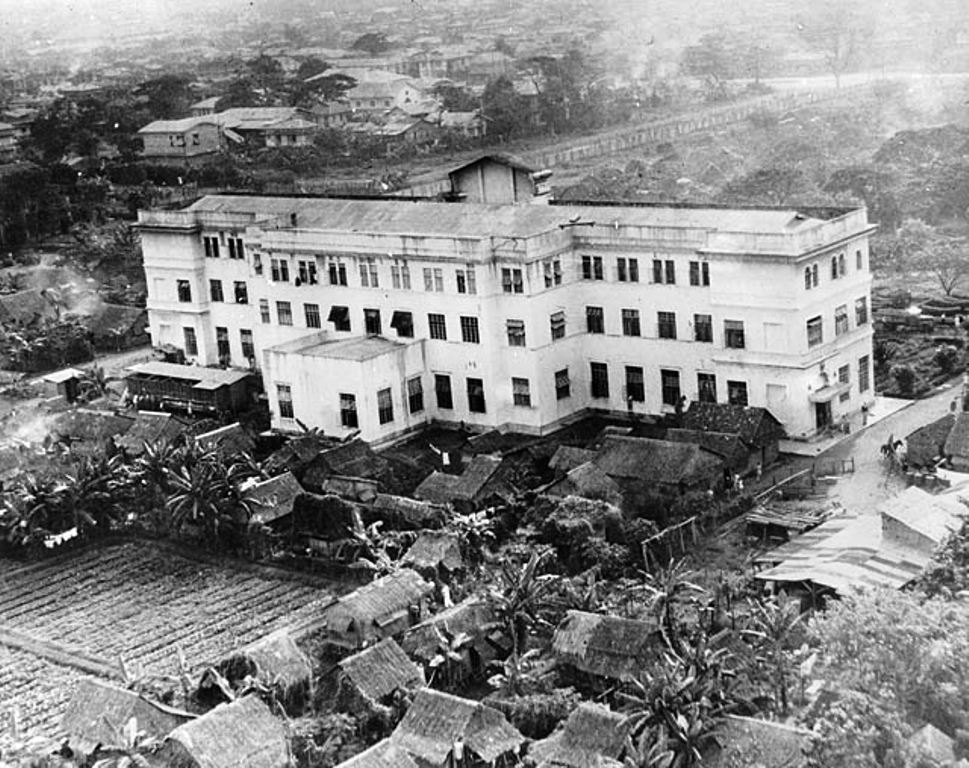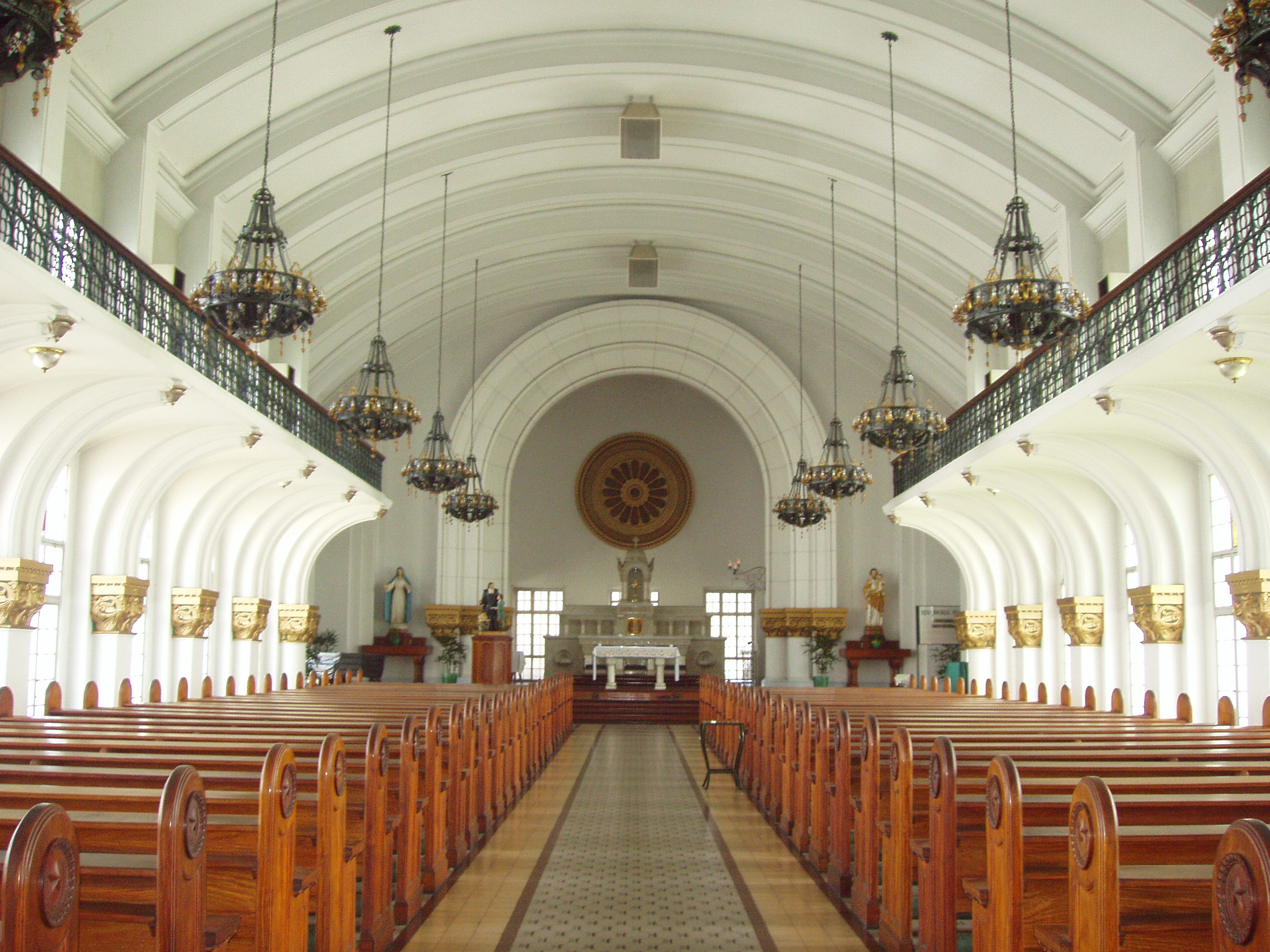Top 5 Haunted Universities in the Philippines: Chilling Ghost Stories and Dark History Revealed
Are you ready to explore the eerie corridors and haunted halls of the Philippines' most spine-chilling campuses? Prepare yourself for a journey into the supernatural as we unveil the dark secrets and ghostly encounters that have made these universities infamous. From World War II tragedies to urban legends passed down through generations, these institutions of higher learning harbor more than just academic knowledge within their walls.

1. University of Santo Tomas (UST)
Ghost Story: The University of Santo Tomas, one of the oldest universities in the Philippines, is renowned for its ghostly encounters and paranormal activities.
i) The UST Main Building, in particular, is said to be haunted by the spirits of those who died during World War II when the building served as an internment camp
ii) A haunting in the Beato-Angelico building where a guard saw students through the newly installed CCTVs when the school was already empty.
iii) Another story involves the UST Hospital, where a staff member encountered the ghost of a man while they were on the way to the morgue.
Historical Context: UST's history dates back to 1611, making it a treasure trove of historical events and potential paranormal activity. The university's use as an internment camp during World War II is a significant factor in its haunted reputation. This dark period in the university's history saw numerous deaths and suffering, which are believed to have left an imprint on the building.
Eyewitness Accounts: Students and staff have reported seeing apparitions and hearing unexplained noises in the Main Building. These accounts often describe shadowy figures, disembodied voices, and a general feeling of unease in certain areas of the campus.
Cultural Significance: The ghost stories of UST reflect the deep impact of World War II on Philippine society. They serve as a form of collective memory, keeping alive the experiences and sufferings of those who lived through that tumultuous period. These stories also contribute to the university's unique cultural identity, blending its academic prestige with a rich tapestry of supernatural lore.
2. Ateneo de Manila University
Ghost Story: Ateneo de Manila University is noted for its haunted tales, including stories of endless staircases and ghostly apparitions in Bellarmine Hall 4. It is also listed among the world's most haunted universities. One of the haunted stories revolves around a janitor and a security guard who seemed to have encountered a rather messy situation. Another stories that surrounds the school states that the campus’ Communications Department building houses a vortex to another dimension.
Historical Context: While specific historical events linked to these hauntings are not mentioned in the research, Ateneo's long history (founded in 1859) provides ample background for the development of such stories. The university's Jesuit roots and its role in Philippine education might contribute to the richness of its supernatural lore.
Eyewitness Accounts: Students have reported experiencing strange phenomena in Bellarmine Hall, such as staircases that seem to go on endlessly and apparitions that appear and disappear mysteriously.
Cultural Significance: The haunted stories of Ateneo de Manila University contribute to its mystique as one of the Philippines' premier educational institutions. These tales often reflect themes of academic pressure, spiritual experiences (given its Jesuit background), and the challenges of student life.

3. De La Salle University (DLSU)
Ghost Story: De La Salle University is known for its brutal World War II-era history, which has led to numerous reports of paranormal activities. It is included in the list of the "Big Four" haunted universities in the Philippines. One particularly hair-raising encounter involves a student praying in the MBS Chapel. As she concentrated on her prayers, she was startled by a woman’s mocking laughter behind her—an unsettling echo of the spirits that linger within those hallowed walls. The combination of history and hauntings creates an environment where students often find themselves glancing over their shoulders.
Historical Context: DLSU's campus was the site of significant violence during World War II. In 1945, 16 Christian Brothers and 25 residents were massacred by Japanese forces on the university grounds. This tragic event forms the backdrop for many of the ghostly encounters reported at the university.
Eyewitness Accounts: While specific eyewitness accounts are not provided in the research, it's common for students and staff to report sightings of ghostly figures in old buildings, particularly those that existed during the war.
Cultural Significance: The haunted stories of DLSU serve as a poignant reminder of the atrocities of war and the resilience of the Philippine people. These tales help preserve the memory of those who lost their lives and reflect the nation's collective trauma from World War II.
4. University of the Philippines Diliman (UP Diliman)
Ghost Story: UP Diliman is part of the "Big Four" haunted universities in the Philippines. While specific ghost stories are not detailed in the research, its inclusion in this list suggests a rich tradition of paranormal tales. One story features a Mass Comm major who rushed back to her dorm to escape the rain, only to be stunned when her roommate claimed to have seen her dart into the bathroom moments before. The only problem? The bathroom was empty, except for a wet towel left behind, raising questions about who—or what—had just been there. Such incidents make students wonder if they’re truly alone on campus, especially in the dead of night.
Historical Context: As the flagship campus of the University of the Philippines system, UP Diliman has a long and storied history dating back to 1908. Its role in various political and social movements throughout Philippine history may contribute to its supernatural lore.
Cultural Significance: Ghost stories at UP Diliman likely reflect themes of academic excellence, political activism, and the pressures of being at a top national university. These tales may serve as a way for students to process the intense academic and social environment of the university.
5. University of the Philippines Los Baños (UPLB)
Ghost Story: The main campus of UPLB is known for its decades-old buildings and eerie tales. While specific stories are not provided in the research, the university's reputation for paranormal activities is well-established .One of the most chilling ghost stories associated with UPLB revolves around the Old Administration Building, also known as the Baker Hall. This building has been the site of numerous paranormal reports over the years.
According to local lore, the spirit of a former student who tragically passed away on campus is said to haunt the halls of Baker Hall. Eyewitness accounts describe sightings of a young woman in a white dress wandering the corridors, often appearing during late-night study sessions or when the building is relatively empty. Students have reported feeling sudden drops in temperature and hearing soft whispers or footsteps when no one else is around.
Historical Context: UPLB's campus has a rich history, including its use as a concentration camp during World War II. This historical background provides fertile ground for the development of ghost stories and supernatural legends.
Cultural Significance: The haunted stories of UPLB likely reflect themes of agricultural heritage (given its specialization in agriculture) and the impact of war on academic institutions. These tales may serve to connect current students with the university's long and sometimes tragic history.
The Cultural Significance of Haunted University Stories in the Philippines
The haunted university stories in the Philippines are deeply rooted in the country's history, culture, and folklore. They serve multiple purposes:
Preserving Historical Memory: Many of these stories are linked to real historical events, particularly the traumas of World War II, helping to keep these memories alive in the collective consciousness .
Cultural Identity: These tales contribute to the unique identity of each university and reflect broader themes in Philippine folklore.
Moral and Ethical Lessons: Ghost stories often incorporate moral lessons, reflecting societal values and norms.
Oral Tradition: These stories are part of the rich oral tradition in the Philippines, passed down through generations and evolving over time.
Social Commentary: The haunted tales often reflect current societal fears, anxieties, and pressures faced by students and the broader community.
Tourism and Economic Impact: These stories can attract visitors interested in the supernatural, potentially boosting local economies.
Afterall, the haunted university stories of the Philippines are more than just tales of the supernatural. They are a vital part of the country's cultural heritage, offering insights into its history, social dynamics, and collective psyche. Understanding these stories enriches our appreciation of Philippine culture and highlights the enduring power of narrative in shaping societal memory and identity.





